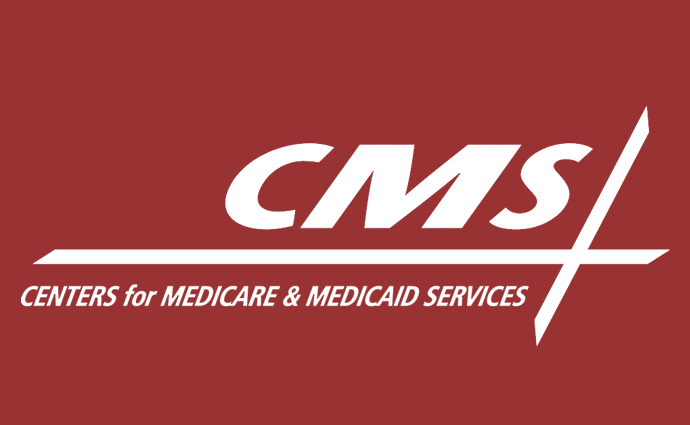CMS to Assess Telehealth Reimbursement Rates Post-Pandemic
In a blog post, CMS Administrator Seema Verma said the agency needs to assess telehealth reimbursement rates considering such significant uptake of virtual care during the COVID-19 pandemic.

Source: Centers for Medicare & Medicaid Services
- Telehealth reimbursement rates is one area CMS is assessing in order to make Medicare telehealth expansions permanent after the COVID-19 pandemic, according to the agency’s administrator.
For more coronavirus updates, visit our resource page, updated twice daily by Xtelligent Healthcare Media.
In a recent Health Affairs blog post, CMS Administrator Seema Verma indicated that Medicare telehealth expansions implemented during the pandemic, including payment for telehealth services delivered to non-rural patients and the delivery of telehealth care in patient homes, may be made permanent.
However, CMS will need to examine three areas before finalizing any permanent telehealth expansions, including telehealth reimbursement rates.
“During the public health emergency, Medicare paid the same rate for a telehealth visit as it would have paid for an in-person visit, given the unique circumstances of the pandemic,” wrote Administrator Verma. “Outside the pandemic, by law Medicare usually pays for telehealth services at rates similar to what professionals are paid in the hospital setting for similar services.”
READ MORE: Providers Want Equal Telehealth Reimbursement Beyond COVID-19
“Further analysis could be done to determine the level of resources involved in telehealth visits outside of a public health emergency, and to inform the extent to which payment rate adjustments might need to be made,” Verma stated.
For example, CMS will need to determine supply costs for telehealth services in order to decide on telehealth reimbursement rates.
Medicare reimbursement rates for in-person care take into account the costs for patient gowns, cleaning, disinfectants, and other supply expenses, Verma explained. Telehealth services do not have these costs.
However, new processes and workflows created to facilitate telehealth visits do have associated costs. These costs would need to be examined in order for CMS to reimburse providers appropriately for permanent Medicare telehealth expansions, the health official elaborated in the blog post.
Other areas CMS would need to examine to make Medicare telehealth expansions permanent included patient safety and clinical appropriateness, as well as healthcare fraud and Medicare program integrity.
READ MORE: How COVID-19 Imperiled Physician Practices, And How to Save Them
“We are monitoring program integrity implications such as practitioners who may be offering shorter telehealth visits with patients to maximize payment, or billing more visits than are possible in a day,” Verma wrote. “We know the path forward to expanding telehealth relies on CMS addressing the potential for fraud and abuse in telehealth, as we do with all services.”
Telehealth has been central to COVID-19 response strategies. Through telehealth and telephonic care, providers have been able to keep seeing patients without exposing them or their staff to the highly contagious novel coronavirus.
Virtual care has also been key to ensuring patient and provider safety within the hospital. With the use of smartphones, tablets, and other mobile technology, hospitals have been able to minimize contact with infected patients while still putting providers and family at patient bedsides.
Temporary payment flexibilities enabled providers to leverage telehealth services seemingly with a flip of a switch.
Early on during the pandemic, Medicare implemented a wide range of payment flexibilities to activate greater telehealth utilization. The flexibilities included temporarily expanding the scope of Medicare telehealth to allow more beneficiaries to benefit from virtual care services and the scope of providers eligible to bill for telehealth services.
READ MORE: Beyond the Pandemic: Telemedicine Reimbursement and Health Policy
CMS also added 135 allowable services, more than doubling the number of services that providers could bill via telehealth. The services included telephonic care for beneficiaries with limited access to video capabilities.
Telehealth utilization among Medicare beneficiaries surged during the pandemic, Verma reported in the blog post. Over 9 million beneficiaries received a telehealth service during the public health emergency between mid-March through mid-June, according to Medicare fee-for-service claims data.
That number could grow, Verma warned, since providers have 12 months after they furnish a service to submit claims to CMS.
Telehealth utilization has similarly skyrocketed among the privately insured as private payers implemented similar telehealth expansions.
A recent analysis by FAIR Health found that telehealth claim lines increased by 8,336 percent between April 2019 to April 2020, and the presence of telehealth claim lines nearly doubled the 4,347 percent increase observed from March 2019 to March 2020. The analysis represented the privately insured population and excluded Medicare and Medicaid claims.
In light of such significant uptake of telehealth services, CMS will consider making some temporary Medicare telehealth expansions permanent to foster innovation while also ensuring “goal standard, in-person care.”
“During these unprecedented times, telemedicine has proven to be a lifeline for health care providers and patients,” Verma concluded. “The rapid adoption of telemedicine among providers and patients has shown that telehealth is here to stay. CMS remains committed to ensuring that the government supports innovation in telehealth that leverages modern technology to enhance patient experience, providing more accessible care.”
